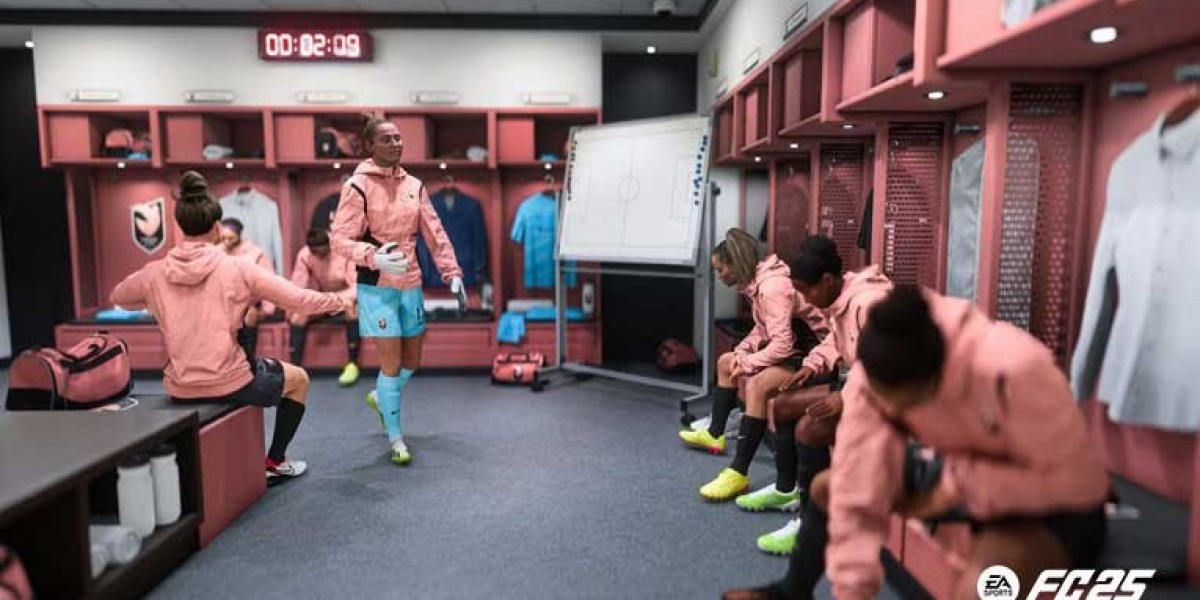Original title: Brief Introduction of medical protective suit and Detection Technology Under the current situation that COVID-19 is still raging, medical protective suit is a necessary protective clothing to ensure the safety of medical staff, public health workers, patients, hospital visitors and other personnel entering the infected area, and its role also includes isolation of pathogens, harmful ultra-fine dust, acid and alkaline solutions, etc., to ensure the safety of life and work of relevant personnel, while keeping the environment clean. 1. Disposable medical protective suit. The performance indicators of medical protective suit mainly refer to protection, comfort, physical and mechanical property, etc. Among them, the most important performance requirement of medical protective suit is protection, which mainly includes liquid barrier, microbial barrier and particulate matter barrier; comfort mainly refers to air permeability and moisture permeability. In order to enhance the protective effect, protective suit fabrics are usually laminated or laminated, which are thick and have poor air permeability and moisture permeability. Long-term wear requires ventilation, moisture permeability, perspiration and heat discharge; physical mechanical property mainly refers to the performance of medical protective suit materials such as tear resistance, puncture resistance and wear resistance, so as to avoid providing channels for the spread of bacteria and viruses. 2. Air permeability of medical protective suit. Disposable medical protective suit materials need to meet the requirements of "three refusals and one resistance" (water, blood, alcohol and antistatic). The composite material can be compounded by different materials, such as polyethylene/polypropylene spunbonded nonwoven cloth compounded with a breathable microporous film or other nonwoven cloth, or spunlaced nonwoven cloth compounded with a breathable microporous film, or wood pulp compounded with spunlaced nonwoven cloth. In addition, some membrane materials made of polytetrafluoroethylene can be used to make high-end protective suit fabrics. Among these materials, breathable microporous films are particularly important. The so-called breathable film is made by uniformly mixing a functional inorganic product into the polyolefin raw material, so that the product generates pores due to high stretching in the film forming process,Medical Disposable Coverall, thereby having the functions of air permeability and moisture conduction; the functions of the breathable film are briefly described as water resistance and air permeability (moisture), taking the most commonly used PE breathable film as an example. (1) Principle of ventilation The principle is very simple: inorganic substance + stretching = micropores. In fact, the operation is very particular. Only the micropores with appropriate size and uniform distribution are effective, as shown in Figure 2: Figure 2. Effective pore size of breathable film If the stretching is insufficient, the pore diameter will be too small or even no pore diameter, while the poor stretching and the micropores with insufficient size can only be used as waste products. (2) Basic film-forming principle of breathable film Film-forming principle of breathable film: PE + CaCO (masterbatch)-film-forming-stretching-breathable film. PE breathable film is made by blending LDPE/LLDPE polyethylene resin carrier with about 50% special calcium carbonate, extruding into film and directionally stretching to a certain ratio. As that polyethylene resin is a thermoplastic plastic material, the polyethylene resin can be stretch and crystallized unde certain conditions, the interface between the polymer and the calcium carbonate particles is peeled off dure stretching, winding pores or channels which are communicated with each other are formed around the calcium carbonate particles, and the pores and the channels endow the film with a ventilation (moisture) function, so that the environments on both sides of the film are communicated. (3) The action mechanism of gas permeable membrane A humidity gradient pressure difference is formed when the water vapor concentration on one side of the membrane is greater than the environment on the other side of the membrane. This provides the basic condition for gas (vapor) convection,3 Ply Disposable Protective Face Mask, and the humidity environment on both sides of the film tends to be relatively balanced due to the formation of convection. The breathable membrane is used as a water barrier membrane, which has a barrier effect on liquid. Because there are many paths in the membrane, the "length-diameter ratio" (L/D) value of the tortuous channel formed by the membrane is very large, which can be understood as capillary. Therefore, in the case of the same liquid (such as water) and the same pressure, as long as the liquid column height of the capillary is less than the length of the capillary, it can ensure that the liquid will not leak out. Expand the full text 3. Classification of medical protective suit. At present, the materials used in medical protective suit on the market are different, but no matter what kind of materials are used, they should meet the requirements of various indicators. Since SARS, various kinds of medical protective suit have emerged. However, according to the form of use, it can be roughly divided into reusable type and disposable type. (1) Reusable medical protective suit material Reusable types include: traditional woven fabrics made of natural fibers (cotton, hemp) and synthetic fibers (polyester, nylon) and their blends; high-density structural fabrics made of superfine filaments; laminated fabrics made by laminating microporous films and ordinary fabrics. Traditional woven fabric: a reusable woven fabric made of natural fibers (cotton, hemp) and synthetic fibers (polyester, nylon) and blends of the two. Traditional cotton surgical gown is still widely used because of its good comfort, but cotton fabric is easy to absorb pollutants and microorganisms in the air, and its good hygroscopicity becomes a favorable condition for the survival of microorganisms. In addition, cotton fabrics do not prevent the penetration of blood and other liquids. High-density fabric: High-count cotton yarn or other superfine synthetic filament is used to weave high-density fabric, so that the yarn gap becomes very small. The fabric has moisture permeability due to the capillary action of fibers, Medical Disposable Coverall ,CE Certificate KN95 Mask, and has certain liquid penetration resistance after being finished by fluorocarbon, silicone and other waterproof agents, but there are still gaps on the surface of the fabric. Although this kind of fabric has excellent moisture permeability, drapability and good handle, its resistance to water pressure is poor. Coated fabric: The fabric is coated directly or by the transfer method, so that the surface of the fabric is sealed by the coating agent, thus having impermeability. The coating agent comprises polyurethane, polyvinyl chloride, polyacrylate, organosilicon rubber and the like. The moisture permeability of fabric is obtained by the action of microporous structure or hydrophilic groups formed by special methods on the coating. Coated fabrics can be divided into hydrophilic coated fabrics and microporous coated fabrics. The hydrophilic coated fabric achieves the function of moisture vapor permeability by forming pores allowing water vapor to pass through through the free volume formed by the thermal movement of the coating agent polymer and the space between the polymers. Due to the presence of hydrophilic groups, sweat water vapor molecules pass through the coating through the action of adsorption-diffusion-desorption. Microporous coated fabrics allow water vapor to pass through by forming a permanent microporous and channel system of 2 to 3 μm in the coating agent. Generally speaking, coated fabrics are easy to process, have high water pressure resistance and strong permeability resistance, but have poor moisture permeability. Laminated fabrics: Laminated fabrics are generally made by laminating ordinary fabrics with a special film. For example, PTFE (polytetrafluoroethylene) super waterproof and moisture-permeable composite fabrics are due to the micropores of the PTFE membrane of the main body of the fabric. On the other hand, the porosity of the film is high, the pore diameter is larger than the diameter of water vapor molecules, the water vapor molecules can freely pass through, and the moisture vapor permeability is good. (2) use disposable medical protective suit material The disposable type is generally a nonwoven material. Spunlaced nonwovens, spunbonded nonwovens, flash evaporation nonwovens and SMS composites are the main types of medical protective suit. Spunbonded method: Spunbonded method is also called spunlaid method. The principle of spunlaid and the properties of fiber web are very similar to those of silkworm silk screen, except that it uses resin as raw material, uses chemical fiber spinning method to form filament, and then uses airflow or mechanical method to separate filament into web, and in most cases, it needs to achieve the purpose of cloth formation through consolidation process. Nonwovens produced by this process are very close to traditional textiles in terms of hand feeling and performance, and polypropylene spunbonded fabrics are more mature in domestic technology. Flash process: Flash process is also known as instantaneous solvent evaporation spunlaid process, which uses polyethylene hydrocarbon as the main raw material. Different from the spunbonding method which uses airflow to separate filaments or the combination of airflow and machinery to separate filaments, the flash evaporation method uses electrostatic separation, that is, the electrostatic generator or electrostatic salt additive is used to form an electrostatic field, so that the filaments rub against each other in the stretching process to form electrostatic separation filaments, which repel each other and maintain a single fiber state, and then the fibers are condensed into a web by an electrostatic device, and the web is then hot-rolled to form the flash evaporation nonwoven fabric. The "Tyvek" series of nonwovens developed by Dupont is manufactured by flash evaporation. Spunlaced process: Spunlaced nonwovens production process is a new type of nonwovens processing technology, which was successfully developed by Dupont and Chicopee companies in the United States in the mid-1970s. Spunlace process, also known as jet spraying process, is to spray the fiber web through high-pressure water column and high-speed water flow, so that the fibers in the fiber web move, rearrange and entangle with each other under the action of water power, so as to achieve the purpose of consolidation into cloth. Spunlaced nonwovens have the advantages of high strength, good moisture absorption and air permeability, not easy to fluff, soft handle, good drapability and no chemical adhesives. The main raw materials are polyester, nylon, polypropylene, viscose, absorbent cotton fiber or pulp and other functional fibers. SMS composite nonwovens: Composite nonwovens are nonwovens made by combining two or more nonwoven webs with different properties (or nonwoven fabrics with other textiles and plastics) by chemical, thermal or mechanical means, or by combining different web forming processes. The composite products with nonwovens as the main body processed by these methods integrate the excellent properties of various materials, and the comprehensive properties of the products are fully enhanced through the complementary properties of various composite materials. 4. Relevant standards for medical protective suit. In terms of packaging and labeling of protective footwear products, China's standards, NFPA 1999 of the United States and EU standards have made more comprehensive and strict provisions. China's GB 19082-2009 "Technical Requirements for Disposable Medical protective suit" stipulates that the protective suit is composed of hooded jacket and trousers, which is divided into one-piece structure and split-body structure, and is not suitable for reusable protective suit, and stipulates the flame retardant performance, water level, charge density, elongation at break and waterproof indicators of medical protective suit. The protective suit applicable to NFPA 1999 standard in the United States are divided into disposable and reusable ones, including split and one-piece work clothes and patient-used ones. In addition to the conventional physical strength performance, flame retardant performance and other indicators, the standard also requires overall testing, and the isolation layer and joints should be tested for liquid resistance and microbial penetration. The European Union's EN 14126-2003 "Anti-infective protective suit for protective suit-Performance requirements and test methods" is applicable to repeatable and limited-use protective suit, but it is not suitable for surgeons and patients to avoid cross infection during surgery. It is required that the joints of the protective suit shall comply with the strength requirements in the EN 14325. The whole set of protective suit is divided into 6 categories according to the protection performance, from type 1 to type 6, the smaller the number is, the higher the protection is; type 4 is the recommended medical requirement,KN95 Mask for Epidemic Prevention and Control, the type with (B) is biological protection, and generally the protective suit with type B is preferred. Above is about "the medical protective suit and the examination technology brief introduction" the content introduction, hoped may bring some help to you. Return to Sohu to see more Responsible Editor:. zjyuan-group.com
بحث
منشورات شائعة
-
 Canadian pharmaceuticals online with no prescription
بواسطة Paige Taylor
Canadian pharmaceuticals online with no prescription
بواسطة Paige Taylor -
 Ваш диплом без лишних хлопот – быстро и надежно
بواسطة worksale
Ваш диплом без лишних хлопот – быстро и надежно
بواسطة worksale -
 Как можно недорого купить аттестат в онлайн магазине
بواسطة sonnick84
Как можно недорого купить аттестат в онлайн магазине
بواسطة sonnick84 -
 Corona Virus travelled Entire World from Wuhan but it did not Reached Beijing and Shanghai Why?
بواسطة H
Corona Virus travelled Entire World from Wuhan but it did not Reached Beijing and Shanghai Why?
بواسطة H -
 Планируете купить по комфортной цене аттестат, либо диплом?
بواسطة sonnick84
Планируете купить по комфортной цене аттестат, либо диплом?
بواسطة sonnick84



